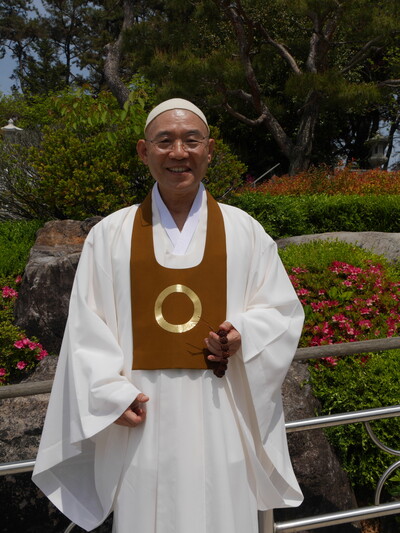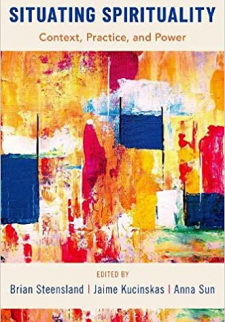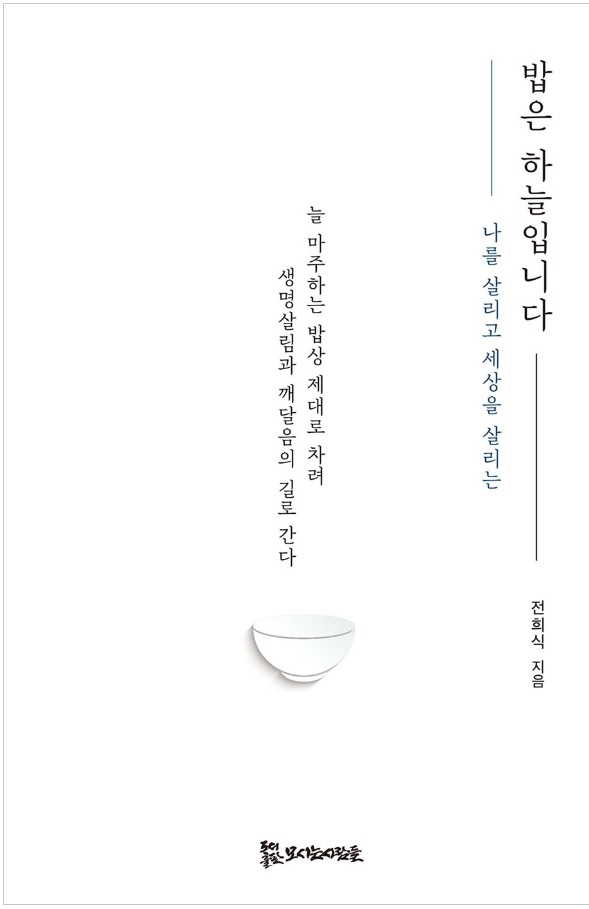A Review of Sufism and Taoism
A Review of Sufism and Taoism
Document Type : Original Article
Author
M. A. Rostamian
Assistant Professor, University of Religions and Denominations.
Abstract
Toshihiko Izutsu's Sufism and Taoism may be regarded as one of the remarkable books concerned with comparative religion; it is, in fact, a comparative study of Islamic and Taoist mysticisms.
Two great merits make the book worth reading:
- first, the author's considerable familiarity with these two mysticisms;
- second, the division of the discussions into two parts: the first part is concerned with the introduction and the second part is concerned with the comparative study of these mystical traditions.
However, the book is defective in some respects:
- first, Izutsu fails to set forth the key elements of Ibn Arabi's mysticism, causing a confusion between the issues concerned with the theoretical mysticism and those associated with the practical mysticism;
- second, he takes no cognizance of the various interpretations of the Taoist mysticism;
- third, only a very small portion of the book deals with its central issue, that is, the comparative study of Sufism and Taoist mysticism.
- Furthermore, the methodology he employs in his study is defective in several
- respects: a little attention is paid to the differences, for example he overlooks the theoretical nature of Ibn Arabi's mysticism and the practical nature of Taoist mysticism; he also sometimes uses inappropriate equivalents; and
- finally, he imposes Ibn Arabi's mysticism upon that of Taoism.
Keywords
Izutsu Sufism and Taoism Islamic mysticism Taoist mysticism Ibn Arabi
===
Reviewing and criticizing the book of Sufism and Taoism *
Mohammad Ali Rostamian refers to the book of Taoism and Sufism, written by Toshi Heiko Izutsu, among the good and influential books in the field of comparative studies of religions.
In this book, the mysticism of Ibn Arabi and Taoism are compared with each other. The author's familiarity with these two mystical schools and the introduction of two mystical traditions in the comparison section are among the merits that make this book worth reading. But this effect also has weaknesses. Despite the fact that the author has a good acquaintance with the mysticism of Ar Ibn Bey, he has not been able to reconstruct the key elements of mysticism and his mystical system. This has caused the problems of theoretical and practical mysticism to mix together. Also, the author has neglected various interpretations of Taoist mysticism. On the other hand, despite the fact that the purpose of the book is comparison, but a small part of the book is dedicated to the comparison of two traditions. In addition, his comparison also has flaws; Like he neglected the theoretical nature of Ibn Arabi's mysticism and the practical nature of Taoist mysticism in; The authority of comparison paid less attention to the differences; In equating these two traditions, he made some mistakes and it has resulted in him imposing Ibn Arabi's mysticism on Taoist mysticism.
Keywords: Izutsu, Sufism and Taoism, Islamic mysticism, Taoist mysticism, Ibn Arabi * Assistant professor at the University of Religions and Religions.
==
142 Introduction
Comparative studies in the field of knowledge of religions is a new field that emerged in order to provide a context for the dialogue of civilizations and to bring people's thoughts closer together in different cultures, and due to its many benefits, it gradually found its place in the scene. He has opened religions. Professor Toshihiko Izutsu is one of those interested in comparative studies and most of his scientific works are in this field. On the other hand, he has been very interested in Islam and Iran and has dedicated most of his research works, both applied and non-applied, to this field. One of his important features in the field of Islamic studies is his familiarity with Islamic scholars, especially Muslim philosophers and mystics, as well as his mastery of the Arabic language.
Therefore, he got acquainted with Islam through the main sources, which made his research more valuable. One of the important works of Izutsu is the translation of the Holy Quran from Arabic to Japanese, which is considered the first translation of its kind. The important position of Eze Vetsu in comparative and Islamic studies caused that in 1379. A conference will be held in his honor. The articles of this conference show that in addition to Izutsu's works of Quranic studies, his comparative studies have also received attention. In line with comparative studies, this article reviews and criticizes his book titled Taoism and Sufism. This book, which compares Islamic mysticism and Taoist mysticism, has been translated into Persian under the title of Sufism and Taoism (translated by Mohammad Javad Gohri, Tehran: Rozneh, 1378). It is stated about it. The position and merits of the book As we have mentioned, the book of Sufism and Taoism has an important position among Islamic thinkers due to its special importance, because this book has been successful in achieving its goals. A brief study of this book tells about this. The author has a good knowledge of Islamic mysticism and Taoist mysticism and has been able to familiarize the reader with these two mystical traditions.
==
143 One of the merits of this book, which goes back to its subject, is the comparison between two mystical traditions that were formed in two different cultures with two completely different languages. The author, while paying attention to the problems that exist in the field of comparative studies, has caused some people not only to reject the comparison between different points of view, but also to question any kind of understanding and dialogue between different cultures. Metahistory - which has been interpreted as a kind of phenomenology (Pazuki, 1382: 13) - makes this possible (Isutsu, 1983: 2: 469). He considers time and thoughts related to it as separate and incomparable, thought can be viewed as a transhistorical thing; therefore, he believes that every historical thought can be separated from its time and with another thought that belongs to He compares these two traditions to show that when you can compare traditions that are completely different in terms of culture and language, there is no doubt that differences If it is less, the comparative study will be easier. Therefore, the writer will take a lot of trouble by choosing the most difficult work. He has suffered to defend comparative studies and this is considered one of the merits of this book. Another important advantage of this book is that before the comparison, it introduced the two traditions of Islamic mysticism and Taoism separately. The first part of the book deals with Islamic mysticism, the second part with Taoist mysticism, and the third part with the comparison between these two. There is no doubt that the comparison between the two traditions depends on knowing both of them, and someone who is not familiar with Islamic or Taoist mysticism cannot make a comparison. From this point of view, the author has provided the possibility to get acquainted with two mystical traditions and then followed the discussion of comparison. But it seems that Izutsu also pursues another goal by compiling the book in three parts, and that is the ease of his work in comparison. The two traditions of Islamic mysticism and Taoist mysticism have many teachings that without clarifying these teachings, it will be very difficult, if not impossible, to make a comparison. For this reason, even if the author does not discuss the teachings in the beginning, during the inevitable comparison
==
It will be 144 works; While the introduction during the comparison, it will not have the benefits of the separate introduction. Therefore, in the overall classification of the book, the author has done a good job and has introduced each of the traditions separately from the discussion of comparison and has provided a way to know each of the two mystical traditions separately. Considerations about the translation of the translator of this book, Mr. Dr. Mohammad Javad Gohri, is a graduate of Imam Sadiq University. Undoubtedly, the specialization and vastness of the field of this book has caused the translator to face a very difficult task. In addition, the translation of such a book requires extensive familiarity with mystical language, both Islamic mysticism and Taoist mysticism, but it seems that the translator did not have enough skills in this field, and this has caused many problems in the translation. , to exist in the field of equivalents of mystical terms. There are other problems in the translation as well, which are due to the translator's lack of accuracy. Misplaced cuts, deletion of some discussions and not translating them are among these issues. Mr. Ali Reza Hedaei has criticized this translation in Mah Din magazine, 1380, No. 45-46, and has tried to briefly explain the problems of this translation. Since the purpose of this article is to deal with the content of the book, we will limit ourselves to the translation and refer those interested to Mr. Hedayi's article for more details. Considerations about the essence of the book According to the features we have listed for this book, it is clear that criticizing it is a difficult task. However, no valuable work is flawless. Here, we would like to mention some points about this book that could have made the book more useful. We explain these points in the order of the sections of the book. The first part is dedicated to the introduction of Islamic mysticism based on Ibn Arabi's book Foss al-Hakim. The author has a good acquaintance with the mystic Ibn Arabi; But be careful in reviewing and criticizing books on Sufism and Taoism
==
The 145 chapters of the book and the way he discusses it indicate that his knowledge of Ibn Arabi's mysticism was not enough and therefore he could not draw the form of Ibn Arabi's mysticism well. In the introduction of the book, Izutsu has mentioned that the topics are scattered in the writings of Ibn Arabi, and these writings form a deep ocean in which everything exists (Izutsu, 1983: 3). , has emphasized that for his discussion, he needs to separate the discussions from each other and organize them, and he cannot deal with every discussion that Ibn Arabi brought in his book. In this sense, he has made the concepts of "existence" and "existence" the focus of his work. (2: Ibid.) But it seems that his lack of deep familiarity with Ibn Arabi's mysticism has caused him to not be able to make this distinction well. As Qaysari has well stated in the introduction of the book Fuss al-Hakim, in twelve chapters (Qayseri, 1375, p. 5, Ibn Arabi's mystical system is designed based on the names and attributes of God in the form of an arc of descent and an arc of ascent, according to which, the world is sent out on the basis of divine grace and then returns to him. But Izutsu could not He systematized Arabic in a correct form and stated the issues in a mixed and scattered manner. It begins with cognitive knowledge, that is, dreams and reality, which is considered to be one of the problems of practical mysticism (7: Ibid). Of course, at the end of the first chapter, he brings the main discussion, i.e. Hazrat Khams (20: Ibid), but most of the discussions in the first chapter are not related to Hazrat Khums. It seems that if Izutsu was inspired by Kayseri's introduction, he would have found a better way. The discussion of Islamic mysticism begins. Even though Ibn Arabi's mystical system revolves around the discussion of Hazrat Khums, this discussion does not find its own place in this book. There are references to it in the first chapter, but firstly, it is very brief and secondly, with The truth of what Ibn Arabi puts forward has a distance. Izutsu defines Hazrat Khums in a format he adapted from Kashani as Hazrat Ghayib, Hazrat Al-Wohayt, Hazrat Af'al, Hazrat Al-Madaal and Hazrat Alam Hassi M. (20, 11: Ibid). But Hazrat Khums as introduced by Qaysari and is more consistent with Ibn Arabi's thought, based on the presence of divinity (oneness and unity), the presence of reason,
==
46 Hazrat al-Mada, Hazrat Madh and Hazrat Insan have been fully planned (Qaysari, 1375: 89). At least, Izutsu should have paid attention to both categories in the discussion of Khums. Even in the 15th chapter, which discusses humans Kamel is proposed (218: Ibid, Izutsu does not interpret the position of the perfect human being as one of the existential worlds, that is, Hazrat Khamis, and only deals with the human being as a small world that encompasses all the worlds. Another problem that shows Deh Izutsu is not familiar enough with Islamic mysticism, he is confused between the issues of theoretical mysticism and practical mysticism. Of course, the issues of theoretical and practical mysticism are mixed together in the books of Muslim mystics, including Ibn Arabi, but as it is known, before Ibn Arabi often gave priority to the problems of practical mysticism and the theoretical mysticism issues were raised implicitly, and the important work of Ibn Arabi was that he gave shape to theoretical mysticism, especially in the books Fatuhat Makkiyya and Fuss al-Hakam. Paying attention to the ontological approach that Izutsu has chosen, it should not deal with practical mysticism issues and or at least that he should raise its issues separately; But we can see that the issues of practical mysticism are mixed with theoretical mysticism and sometimes they are given priority and are raised earlier than theoretical mysticism. For example, immediately after the discussion of the absolute, he discusses self-knowledge and the way to know the truth through self-knowledge (36: Ibid) or the discussion of wonder in the fifth chapter (68: Ibid, which is related to tension and analogy, more than It is related to ontology, it is an epistemological discussion and it is considered one of the issues of practical mysticism. This approach of his has caused the reader to get lost and not be able to properly get acquainted with the form of Ibn Arabi's mysticism. Perhaps the reason for this is the practical form of Taoist mysticism. It may be that this caused Izutsu to raise the issues of practical mysticism in Ibn Arabi's mysticism so that the comparison would be easier and more successful. However, in the case of the second part that deals with Taoist mysticism, this point has been neglected that there are generally two different interpretations of " "Tao" is mentioned in Taoist mysticism, and especially in the words of Lao Tzu and Zhong Tzu. According to one interpretation, Tao is the supreme and nameless truth that forms the whole universe. According to this interpretation, Tao is a truth beyond the material world. Reviewing and criticizing the book of Sufism and Taoism
==
147 Another interpretation looks at the Tao with a materialistic attitude and considers the Tao, that is, the method, to be just the laws governing nature. According to this interpretation, Taoist mysticism is simply a materialist mysticism whose goal and purpose is to preserve this material life - for example, Fang Yu Lan (141:1380) provides such an interpretation of the mysticism of these two sages. It has been stated that the text of Tao Te Jing, which Izutsu puts forward as a basis for the introduction of Taoist mysticism, is very ambiguous and can be interpreted in both ways, but since the first interpretation is closer to Islamic mysticism, Izutsu chose this interpretation and did not mention the second interpretation. Although it seems that the first interpretation is stronger, it was appropriate that the author did not state these two interpretations at the beginning of the book and prove the preference of the first interpretation over the second. At least it was put forward as a presupposition. The design of this topic could help the reader to make a better judgment in the comparison. There are also considerations about the third part. The first point is that this part is much less compact than the other two parts, out of a total of 493 About 25 pages in the original text are dedicated to this section, which in Mr. Gohri's translation, 535 pages, h The smoke covers 30 pages. Because Izutsu introduced the comparison between two traditions as his main goal of this research, he should give more importance to the comparison and focus on the comparison. As we said before, the work done by Izutsu in separating the two traditions and comparing them is a very good and valuable work; But when the goal is comparison, comparison should be prioritized and most of the introduction should be done in this way. But Izutsu did the opposite and devoted most of his efforts to introducing these two mystical traditions separately and devoted only a small part of the work to the comparison. One of the important objections of Izutsu's comparison between the tradition of Islamic mysticism and Taoism is that the author did not pay serious attention to the distinctions. He simply stated the similarities and homogeneities and about the distinctions, he only pointed to their existence and their formality (70: Ibid: see).
More about this source textSource text required for additional translation information
Send feedback
Side panels
==
147 Another interpretation looks at the Tao with a materialistic attitude and considers the Tao, that is, the method, to be just the laws governing nature. According to this interpretation, Taoist mysticism is simply a materialist mysticism whose goal and purpose is to preserve this material life - for example, Fang Yu Lan (141:1380) provides such an interpretation of the mysticism of these two sages. It has been stated that the text of Tao Te Jing, which Izutsu puts forward as a basis for the introduction of Taoist mysticism, is very ambiguous and can be interpreted in both ways, but since the first interpretation is closer to Islamic mysticism, Izutsu chose this interpretation and did not mention the second interpretation. Although it seems that the first interpretation is stronger, it was appropriate that the author did not state these two interpretations at the beginning of the book and prove the preference of the first interpretation over the second. At least it was put forward as a presupposition. The design of this topic could help the reader to make a better judgment in the comparison. There are also considerations about the third part. The first point is that this part is much less compact than the other two parts, out of a total of 493 About 25 pages in the original text are dedicated to this section, which in Mr. Gohri's translation, 535 pages, h The smoke covers 30 pages. Because Izutsu introduced the comparison between two traditions as his main goal of this research, he should give more importance to the comparison and focus on the comparison. As we said before, the work done by Izutsu in separating the two traditions and comparing them is a very good and valuable work; But when the goal is comparison, comparison should be prioritized and most of the introduction should be done in this way. But Izutsu did the opposite and devoted most of his efforts to introducing these two mystical traditions separately and devoted only a small part of the work to the comparison. One of the important objections of Izutsu's comparison between the tradition of Islamic mysticism and Taoism is that the author did not pay serious attention to the distinctions. He simply stated the similarities and homogeneities and about the distinctions, he only pointed to their existence and their formality (70: Ibid: see).
More about this source textSource text required for additional translation information
Send feedback
Side panels
===
noticed; Because although it is possible to compare different traditions with special methods and express the similarities, it should not be overlooked that the difference between religions and traditions is a serious matter and even in cases where there are many similarities between two religions or traditions Yes, the differences are also serious. Therefore, a researcher who deals with the adaptation between two specific traditions or religions, must also pay attention to the differences and express them. The expression of differences along with the similarities in comparative discussions helps to master the discussion and shows how real the similarities are. One of the important differences between Ibn Arabi's mysticism and Taoism, which it seems necessary to pay attention to in comparison, is to pay attention to the fact that we stated before; It means that although Ibn Arabi deals with practical mysticism issues in the chapters on judgment, but the nature of his mysticism in this book is theoretical (Qaysari, Jalaluddin Ashtiani's introduction, p. 2), while Taoist mysticism has a practical nature. The goal of theoretical mysticism is to draw the existential order of the world, but practical mysticism focuses on the way humans behave towards a specific goal, which in Islamic mysticism is the goal of death. The nature of Ibn Arabi's mysticism is theoretical, because his main goal is to describe how the world is issued from the Almighty and the world returns to Him; On the other hand, although Tao Tejing deals with various theoretical topics about how the world is formed, the nature of Taoist mysticism is practical. Taoist mysticism thinks about the preservation of human existence in various ways (Yu Lan, 1380: 88). This difference between Islamic mysticism and Taoist mysticism causes the comparison between the two to be very different from what Izutsu did, because The topics discussed in practical mysticism are completely different from theoretical mysticism. Another important difference between these two mystical traditions that can be considered in the comparison between these two mystical traditions is that Ibn Arabi's mysticism is the peak of Islamic mysticism. Taoist mysticism in the Tao Te Jing is in the formative period. In other words, Ibn Arabi's mysticism has become a systematic mysticism, while Taoist mysticism in a few hundred years before Christ, which is the two phases of the formation of Tao Te Jing is simply the scattered words of the sages who sought to reform society and individuals.
===
149 Taoism found a specific system in the span of time and in the following centuries, but the mysticism that Lao Ze and Zhong Ze present is only in the form of wise words that have the authority to be transformed into a mystical system. Taoist mysticism at this stage can be compared to Islamic mysticism at the beginning of its emergence, which only includes the scattered words of mystics. Therefore, Taoist mysticism does not have a specific system even in the practical dimension at this stage. The lack of a system has caused Taoist mysticism to not have the necessary capacity to compare with Islamic mysticism, especially Ibn Arabi's mysticism. As a result, in many cases, the writer has been forced to give a special system to the words of these mystics and even in some cases to borrow from Ibn Arabi's system when expressing Taoist mysticism, which leads to the imposition of one system on another system. The main stage of borrowing is equating "Tao" with "existence". In order to form a common language between Islamic mysticism and Taoism, the author equated Tao to existence (Ibid: 472), which is flawed in several ways: firstly, it is the imposition of one tradition on another, and this is a cause of misunderstanding in comparison. Secondly, it is not compatible with the words and methods of these two Taoist mystics who consider the Tao to be beyond name and existence. In Taoist mysticism, they interpret the unnameable Tao as "non-existent" beyond existence (Yolan, 1380). 126: (Thirdly, placing absolute existence at the highest level of the universe is not compatible even with the mysticism of Ibn Arabi, because the existence or merciful soul is a divine manifestation, and the Supreme Being itself is before the level of manifestation, "Uma", "Anqa" And the unseen is called qi (Sari, 1375, : 26, 25, 987). The fact that in other places, he deals with the identity of the occult which is above the existence, this indicates that Qaysari considers the discussion of existence as a preliminary to the beginning and not that The level of truth is unique to it. This attitude indicates that the above level of divine essence exists, and by the way, this is a point that is much more compatible with Taoist mystics; Because in their eyes, the above Tao also exists. Therefore, this equation is not correct.
===
Of course, there is no doubt that we need a common language in every application. But it seems that in this case, it is better to assign the common language to the characteristics and attributes, that is, instead of making Tao equivalent in terms of language, we can list the characteristics and characteristics that are in Chinese culture, and Especially the Tao Tejing has stated for Tao, we should equate it in Islamic mysticism and if we do not find any exact equivalent, we should express the closest element. At the end of this article, it is necessary to mention this point that what was stated in the review of the mentioned book does not reduce the high value of this book. Bishek Izutsu, as he himself stated, had a difficult task ahead of him. Part of the objections of the book comes back to the fact that none of these two traditions that he compared in this book were native to him and he got to know them from outside. However, this book has been successful in its goal to a large extent. It is hoped that by reviewing and criticizing books in this field and expanding comparative studies, the way for such studies that can help to know more about religious traditions will be paved. Bibliography of Izutsu, Toshie Yoko (1382), Spokesman of East and West, Tehran: University of Tehran, Institute for Research and Development of Human Sciences. "Transhistorical dialogue and meta-dialogue in Izutsu's thought", in Speaking of the East and the West (Collection of Proceedings of the Conference Commemorating Professor Toshihiko Izutsu), Tehran: University of Tehran, Institute for Research and Development of Human Sciences. Kayseri Rumi, Mohammad Dawood (1375), Description of Fuss al-Hakam, Edited by Professor Jalaluddin Ashtiani, Tehran: Scientific and Cultural Publishing Company. Yu Lan, Fang (1380), History of Chinese Philosophy, translated by Farid Javaherkalam, Tehran: Forozan Rooz Publishing and Research. Izutsu, Toshihiko (1983), Sufism and Taoism, California : University of California Press.
===
بررسي و نقد كتاب صوفيسم و تائوئيسم
* محمدعلي رستميان
اشاره
كتـاب Taoism and Sufism ،نوشـته توشـي هيكو ايزوتـسو از جملـه كتـاب هـاي خـوب و
تأثيرگذار در زمينه مطالعات تطبيقي اديان است. در اين كتاب عرفان ابن عربي و تائويي ،
با يكديگر مقايسه . اند شده آشنايي خوب نويسنده با اين دو مكتـب عرفـاني و همچنـين
تفكيك معرفي دو سنت عرفاني از بخش مقايسه ، از جمله امتيازاتي است كه اين كتاب
را شايستة خواندن كرده است . ليكن اين اثر ضعفهايي نيز دارد با. وجود اينكه نويسنده
آشنايي خوبي با عرفان عر ابن بي دارد، نتوانسته است عناصر كليدي عرفان را او معرفـي
و نظام عرفاني به را او خوبي بازسازي كند. اين امـر باعـث شـده اسـت مـسائل عرفـان
نظري و عملي به را هم بياميزد . همچنين نويسنده از تفسيرهاي مختلف عرفان تـائويي
غفلت ورزيده است از. طرف ديگر، عليرغم اينكه هدف كتاب م قايسه است، اما بخـش
كوچكي از كتاب به مقايس دو ة سنت، اختصاص يافته است. علاوه بر اين، مقايس او ة نيز
داراي ايراداتي است ؛ مانند اينكه از ماهيت نظري عرفـان ابـن عربـي و ماهيـت عملـي
عرفان ت ائويي غفلـت كـرده در ؛ مقـام مقايـسه كمتـر بـه اخـتلاف هـا توجـه كـرده؛ در
معادلسازي بين اين دو سنت دچار اشتباهاتي و ؛شده به او كار تحميل عرفان ابن عربي
بر عرفان تائويي انجاميده است .
ها كليدواژه : ايزوتسو، صوفيسم و تائوئيسم، عرفان اسلامي، عرفان تائويي، ابنعربي
* استاديار دانشگاه اديان و مذاهب.
/ 142
مقدمه
مطالعات تطبيقي در زمينه شناخت اديان، رشتة جديدي است كه در جهت فـراهم كـردن
زمينة گفت وگوي تمدن ها و نزديك كردن افكار انسان ها در فرهنگ هاي مختلـف پديـد
آمده و به دليل فوائد بسياري كه داشته، كم كم جاي خود را در صحنه شناخت اديان بـاز
كرده است . پروفسور توشيهيكو ايزوتسو، يكي ازعلاقه مندان به مطالعات تطبيقي است و
بيشتر كارهاي علمي او در اين زمينه است. از طرف ديگر او بـه اسـلام و ايـران علاقـه
بسياري داشته و اكثر كارهاي تحقيقاتي اش، چه تطبيقـي و چـه غيرتطبيقـي، را بـه ايـن
حوزه اختصاص داده است . يكي از ويژگـي هـاي مهـم او در زمينـه مطالعـات اسـلامي،
آشنايي كافي او با علماي اسلامي به ويژه فلاسفه و عارفان مسلم ان و همچنين تسلط بر
زبان عربي است . بنابراين او با اسلام از طريق منابع اصلي آشنا شده كه اين مسئله باعث
ارزشمندتر شدن تحقيقات او شده است . يكي از كارهاي مهـم ايزوتـسو، ترجمـه قـرآن
كريم از عربي به ژاپني است كه اولين ترجمه در نوع خود محسوب ميشود .
جايگاه مهم ايز وتسو در مطالعات تطبيقي و اسلامي موجب شد تا در سال 1379ش.
همايشي در بزرگداشت او برگزار شود . مقالات اين همايش نشان مي دهند كه علاوه بـر
آثار قرآنپژوهانة ايزوتسو، مطالعات تطبيقي او نيز مورد توجه قرار گرفته است .
مقاله حاضر در راستاي توجه به مطالعات تطبيقي، به بررسي و نقد كتاب او با عنوان
Taoism and Sufism ميپردازد. اين كتاب كه در زمينة مقايسه عرفان اسلامي و عرفان تائويي
است تحت عنوان صوفيسم و تائوئيسم به فارسي برگردانده شده است (ترجمة محمدجواد
گوهري، تهران : روزنـه، 1378 .(هدف اصلي از اين بررسي معرفي اين كتاب است و در كنار
آن، ملاحظاتي نيز دربارة آن بيان ميشود .
جايگاه و امتيازات كتاب
همانطور كه اشاره كرديم، كتـاب صوفيـسم و تائوئيـسم بـه دليـل اهميـت خاصـش از
جايگاه مهمي نزد انديشمندان اسلامي برخوردار است؛ زير ا ايـن كتـاب در رسـيدن بـه
اهدافش موفق بوده است . مطالعة اجمالي اين كتاب حكايـت از ايـن دارد كـه نويـسنده
آشنايي خوبي با عرفان اسلامي و عرفان تائويي داشته و تـا حـد زيـادي توانـسته اسـت
خواننده را با اين دو سنت عرفاني آشنا كند .
بررسي و نقد كتاب صوفيسم و تائوئيسم
/ 143
يكي از امتيازات اين كتاب كه به موضـوع آن بـازمي گـردد، مقايـسه بـين دو سـنت
عرفانياي است كه در دو فرهنگ م ختلف با دو زبان كـاملاً متفـاوت شـكل گرفتـه انـد .
نويسنده ضمن توجه به مشكلاتي كه در زمينه مطالعات تطبيقـي وجـود دارد و موجـب
شده است تا عده اي نه تنها تطبيق بين ديدگاه هاي مختلف را مردود بدانند، بلكه اصـولاً
هر گونه تفاهم و گفت وگوي بين فرهنگ هاي مختلـف را زيـر سـؤال ببرنـد، بـا طـرح
مطالعه فراتاريخي ــ كه از آن به نوعي پديدارشناسي تعبير كرده اند (پازوكي،1382( :13 ــ
اين امر را ميسر ميداند (469; 2: 1983, Isutsu .(منظور ايزوتسو از مطالعه فـرا تـاريخي ايـن
است كه برخلاف نگرش تاريخ گرا كه دوره هاي زمان و انديـشه هـاي مربـوط بـه آن را
جداي از هم و غيرقابل مقايسه مي داند، مي توان انديـشه را بـه عنـوان امـري فراتـاريخي
نگريست؛ از اين رو معتقد است كه مي توان هر انديشه تاريخي را از زمان آن جدا كـرده
و با انديشه ديگري كه متعلق به زمان و مكان ديگري است مقايسه كرد . او به تطبيق بين
اين دو سنت پرد اخته است تا نشان دهد كه وقتي بتوان سنت هايي را با هم مقايسه كـرد
كه از لحاظ فرهنگي و زباني كاملاً متفاوت هستند، بي شك در مـواردي كـه اخـتلاف و
تفاوت كمتر باشد مطالعة تطبيقي سهل تـر خواهـد بـود . بنـابراين نويـسنده بـا انتخـاب
سختترين كار، زحمت زيادي را متحمل شده است تا از مطالعات تطبيقي دفاع كنـد و
اين يكي از امتيازات اين كتاب محسوب ميشود .
يكي ديگر از امتيازات مهم اين كتاب، اين است كه قبـل از مقايـسه، بـه معرفـي دو
سنت عرفان اسلامي و تائويي به شكل مجزا پرداخته است . بخش اول كتاب بـه عرفـان
اسلامي و بخش دوم به عرفان تائويي و بخش سوم به مقايسه بـين ايـن دو مـي پـردازد .
شكي نيست كه مقايسه بين دو سنت، بر شناخت هر دوي آنها متوقف است و كسي كـه
با عرفان اسلامي يا تائويي آشنا نباشد، نمي تواند دست به مقايـسه ببـرد . از ايـن جهـت،
نويسنده ابتدا امكان آشنايي با دو سنت عرفاني را فراهم ساخته و سپس بحث مقايسه را
پيگيري كرده است . اما به نظر مي رسد كه ايزوتسو از تدوين كتاب در سه بخش، هدف
ديگري را نيز دنبال مي كند و آن سهولت كار خودش در زمان مقايـسه اسـت . دو سـنت
عرفان اسلامي و عرفان تائويي داراي آموزه هاي متعددي هستند كه بـدون روشـن شـدن
اين آموزه ها كار مق ايسه بسيار سخت، بلكه ناممكن خواهد بود . از اين جهت حتي اگـر
نويسنده در ابتدا نيز به بحث دربارة آموزه ها نپردازد، در هنگام مقايسه نـاگزير از چنـين
/ 144
كاري خواهد بود؛ در حالي كه معرفي در حين مقايسه، فوايد معرفي تفكيكي را نخواهد
داشت. بنابراين در تقسيم بندي كلي كتاب ، مؤلف بـه خـوبي عمـل كـرده و هـر يـك از
سنتها را جدا از بحث مقايسه معرفي نموده و راه را براي شناخت هر يك از دو سنت
عرفاني به صورت مجزا فراهم آورده است .
ملاحظاتي در مورد ترجمه
مترجم اين كتاب، آقاي دكتـر محمـدجواد گـوهري از دانـش آموختگـان دانـشگاه امـام
صادق ع( ) است. بي شك تخصصي بودن و وسعت قلمـرو ايـن كتـاب موجـب گرديـده
است تا مترجم كار بسيار دشواري پيش رو داشته باشد . علاوه بـر ايـن، ترجمـه چنـين
كتابي نياز به آشنايي وسيع با زبان عرفاني، هم عرفان اسلامي و هم عرفان تائويي، دارد،
اما به نظر مي رسد كه مترجم در اين زمينه مهارت ك افي نداشته و همين امر موجب شده
است تا در ترجمه اشكالات زيادي، در زمينه معـادل هـاي اصـطلاحات عرفـاني وجـود
داشته باشد . اشـكالات ديگـري نيـز در ترجمـه وجـود دارد كـه بـه كـم دقتـي متـرجم
بازميگردد. تقطيعهاي نابجا، حذف بعضي از بحث ها و ترجمه نكـردن آنهـا، از جملـه
اين اشكال هاست. آقاي علي رضا هدايي در مجله ماه دين ، سـال 1380 ،شـمارة 45ــ 46
اين ترجمه را نقد كرده و سعي كرده است كه به اختصار اشكال هاي اين ترجمه را بيـان
كند. از آنجا كه هدف اين نوشتار پرداختن به محتواي كتاب است، در مورد ترجمـه بـه
همين مقدار بسنده مي كنيم و علاقه مندان را براي تفصيل بيشتر بـه مقالـة آقـاي هـدايي
ارجاع ميدهيم .
ملاحظاتي دربارة اصل كتاب
با توجه به ويژگي هايي كه براي اين كتاب برشمرديم، مشخص اسـت كـه نقـد آن كـار
دشواري است . با اين حال هيچ كار ارزشمندي بي عيـب نيـست . در اينجـا مـي خـواهيم
نكاتي را در مورد اين كتاب بيا ن كنيم كه رعايت آنها مي توانست كتاب را مفيـدتر كنـد .
اين نكات را به ترتيب بخشهاي كتاب بيان ميكنيم .
بخش اول به معرفي عرفان اسلامي، بـر مبنـاي كتـاب فـصوص الحكـم ابـن عربـي،
اختصاص يافته است . نويسنده آشنايي خـوبي بـا عرفـان ابـن عربـي دارد؛ امـا دقـت در
بررسي و نقد كتاب صوفيسم و تائوئيسم / 145
فصلهاي كتاب و شيو ه بحث او، حكايت از آن دارد كه شناخت او از عرفان ابـن عربـي
كافي نبوده و از اين رو نتوانسته است شاكله عرفان ابن عربـي را بـه خـوبي ترسـيم كنـد .
ايزوتسو در مقدمه كتاب به اين مطلب اشاره كرده اسـت كـه در نوشـته هـاي ابـن عربـي
مباحث به صورت پراكنده آمده است، و اين نوشتهها اقيانوسي ژرف را تشكيل مي دهند
كه همه چيز در آن وجود دارد ( 3: 1983, Izutsu .(به همين دليل، تأكيد كرده است كه براي
بحث خود نيازمند تفكيك بحث ها از همديگر و ساماندهي آنهاست و نمي تواند بـه هـر
بحثي كه ابن عربي در كتاب خود آورده است بپردازد . از اين جهـت مفهـوم هـ « ستي و »
«وجود» را محوركار خود قرار داده است (2: Ibid .(اما به نظر مي رسد كـه عـدم آشـنايي
عميق او با عرفان ابنعربيموجب شده استكه نتواند اين تفكيك را بهخوبيانجام دهد .
همانطور كه قيصري در مقدمـه كتـاب فـصوص الحكـم ، در ضـمن دوازده فـصل،
بهخوبي بيان كرده (قيـصر ي، 1375 ،ص )5 ، نظام عرفاني ابنعربي بر مبناي اسما و صـفات
الهي به شكل قوس نزول و قوس صعود طراحي شده است كـه بـر طبـق آن، عـالم بـر
مبناي فيض الاهي صادر و سپس به سوي او بازمي گـردد . امـا ايزوتـسو نتوانـسته اسـت
عرفان ابن عربي را به شكل درستي نظام منـد كنـد و مباحـث را بـه صـورت مخلـوط و
پراكنده بيان كرده است . ايزوتسو بحث عرفان ابن عربي را با مسئله اي معرفـت شـناختي،
يعني رؤيا و واقع، كه تا حدي از مسائل عرفان عملي محسوب مي شود، شروع مـي كنـد
(7: Ibid ( . البته او در آخر فصل اول، بحث اصـلي، يعنـي حـضرات خمـس، را مـي آورد
(20: Ibid ( ، اما اكثر بحثهاي فصل اول به حضرات خمس مربوط نيست. به نظر ميرسد
اگر ايزوتسو از مقدمه قيصري الهام مـي گرفـت، راه بهتـري را در شـروع بحـث عرفـان
اسلامي ميپيمود .
با اينكه نظام عرفاني ابن عربي بر محور بحث حضرات خمس مـي چرخـد، امـا ايـن
بحث در اين كتاب جايگاه خاص خود را نـد ارد. در فـصل اول اشـاراتي بـه آن وجـود
دارد، اما اولاً بسيار مختصر است و ثانياً با حقيقت آنچه ابن عربي مطرح ميكنـد، فاصـله
دارد. ايزوتسو، حضرات خمس را در قالبي كه از كاشاني اقتباس كـرده حـضرت غيـب،
حضرت الوهيت، حضرت افع ال، حضرت مثال و حضرت عالم حسي م عرفـي مـي كنـد
(20, 11: Ibid .(اما حضرات خمس آنگونه كه قيصري معرفي ميكند و با انديشه ابنعربـي
نيز سازگارتر است، بر مبناي حضرت الوهيت (احـديت و واحـديت )، حـضرت عقـل،
/ 146
حضرت مثال، حضرت ماده و حضرت انسان كامل برنامـه ريـزي شـده اسـت (قيـصري،
1375( : 89 . حداقل اينكه ايزوتسو در بحث حضرات خمس بايد به هر دو طبقه بنـدي در
مورد حضرات خمس توجه مي كرد. حتي در فصل پانزدهم كه بحث انسان كامل مطـرح
ميشود (218: Ibid ،(ايزوتسو به خوبي جايگاه انـسان كامـل را بـه عنـوان يكـي از عـوالم
وجودي، يعني حضرت خامس تفسير نمي كند و صرفا به انسان به عنوان عالم صغير كـه
جامع همه عوالم است، ميپردازد .
مسئلة ديگري كه نشان مي دهد ايزوتسو به اندازه كـافي بـا عرفـان اسـلامي آشـنايي
ندارد، خلط بين مسائل عرفان نظري و عرفان عملي است . البته مسائل عرفـان نظـري و
عملي در كتاب هاي عارفان مسلمان و از جملـه ابـن عربـي بـه هـم آميختـه اسـت؛ امـا
همانگونه كه معروف است، قبل از ابن عربي غالباً مسائل عرفان عملي اولويت داشـت و
مسائل عرفان نظري به طور ضمني مطرح مي شد و كار مهم ابن عربي اين بود كه شـاكله
به عرفان نظري را، ويژه در كتابهاي فتوحات مكيه و فصوص الحكم ، پي ريزي كـرد . از
اين جهت و با توجه به رويكرد ه ستيشناختياي كه ايزوتسو انتخاب كرده است، اصولاً
نبايد به مسائل عرفان عملي بپردازد و يا حداقل اينكه بايد مسائل آن را جداگانه مطـرح
كند؛ اما مشاهده مي كنيم كه مسائل عرفان عملي با عرفان نظري به هـم آميختـه شـده و
گاه در اولويت قرار گرفته و زودتر از مسائل عرفان ن ظري مطرح شدهاند. بـراي مثـال او
بلافاصله بعد از بحث مطلق به بحث خودشناسي و راه شناخت حق از طريـق شـناخت
نفس ميپردازد (36: Ibid (و يا بحث حيرت در فصل پنجم (68: Ibid ،(كه به تنزيه و تشبيه
مربوط مي شود، بيش از آنكه به هستي شناختي مربوط باشد، بحثي معرفت شناختي ا ست
و از مسائل عرفان عملي محسوب مي شود. اين رويكرد او موجب شده است تا خواننده
دچار سرگرداني شود و نتواند به درستي با شاكله عرفان ابنعربي آشنا شود. شايد علـت
اين امر شاكله عملي عرفان تـائويي باشـد كـه باعـث شـده اسـت ايزوتـسو در عرفـان
ابنعربي نيز مسائل عرفان عملي را مطرح كند تا مقايسه راحتتر و موفقتر باشد .
اما در مورد بخش دوم كه به عرفان تائويي مي پردازد، از اين نكته غفلت شده اسـت
كه به طور كلي دو تفسير متفاوت از «تائو» در عرفان تائويي، و مخصوصاً در سخنان لائو
زه و جونگ زه، مطرح است . بر طبق يك تفسير، تائو متعالي ترين حقيقت و بي نام است
كه همه عالم را شكل مي دهد. بر طبق اين تفسير تائو حقيقتي ماوراي عالم مادي اسـت .
بررسي و نقد كتاب صوفيسم و تائوئيسم / 147
تفسير ديگر با نگرشي مادي گرايانه به تـائو مـي نگـرد و تـائو، يعنـي طريقـت، را صـرفاً
قوانين حاكم بر طبيعت مي داند. بر طبق اين تفـسير عرفـان تـائويي صـرفاً يـك عرفـان
ماديگرايانه است كه غايت و هدفش حفظ اين زندگي مادي است ــ براي مثـال فانـگ
يو لان، (1380 :141 (چنين تفسيري از عرفان اين دو حكيم ارائه مي دهد. ايـن دو تفـسير
از اين جهت رخ داده است كه متن تائو ته جينگ كه ايزوتسو آن را به عنوان مبنـا بـراي
معرفي عرفان تائويي مطرح ك رده، بسيار مبهم است و مـي تـوان آن را بـه هـر دو شـكل
تفسير كرد . اما از آنجا كه تفسير اول با عرفان اسلامي نزديكـي بيـشتري دارد، ايزوتـسو
اين تفس ير را برگزيده و هيچ اشـاره اي بـه تفـسير دوم نكـرده اسـت . هرچنـد بـه نظـر
ميرسد كه تفسير اول قوي تر است، اما مناسب بود كه نويس نده در ابتداي كتاب ايـن دو
تفسير را بيان و ترجيح تفسير اول بر دوم را اثبات يا دسـت كـم بـه عنـوان پـيش فـرض
مطرح مي كرد. طرح اين موضوع مي توانست به خواننـده بـراي داوري بهتـر در مقايـسه
كمك كند .
در مورد بخش سوم نيز ملاحظاتي وجود دارد . اولين نكته اينكـه ايـن بخـش بـسيار
كمحجمتر از دو بخش ديگر است، از مجموع 493 صـفحه در مـتن اصـلي حـدود 25
صفحه به اين بخش اختصاص يافته كه در ترجمه آقاي گـوهري ، 535 صـفحه ، حـدود
30 صفحه را دربرمي گيرد. چون ايزوتسو هدف اصلي خود از اين تحقيق را مقايسه بين
دو سنت معرفي كرده است، بايد به مقابله اهميت بيشتري بدهـد و بـر مقايـسه متمركـز
شود. همانطور كه پيش از اين گفتيم، كاري كـه ايزوتـسو در تفكيـك بـين معرفـي دو
سنت و مقايسة بين آنها انجام داده، كار بسيار خوب و ارزشمندي است؛ ليكن زماني كه
هدف مقايسه است، مقايسه بايد در اولويت قرار بگيرد و بيشترين معرفي بـا ايـن رو ش
انجام شود . اما ايزوتسو برعكس عمل كرده و بيشترين همت خود را صرف معرفي ايـن
دو سنت عرفاني به صورت جداگانه كرده و تنها بخش كـوچكي از كـار را بـه مقايـسه
اختصاص داده است .
يكي از ايرادات مهم تطبيق ايزوتسو بين سنت عرفان اسلامي و تائويي اين است كـه
نويسنده به تمايزها توجه جدي نداشته اسـت . او صـرفاً شـباهت هـا و هـم گـوني هـا را
بيان كرده و در مورد تمايزها، فقط به وجود آنها و صوري بودنشان اشـاره كـرده اسـت
(70: Ibid: see .(حال آنكه در تطبيق بين اديان و سنتهاي مختلف، بايد به اختلافها نيـز
/ 148
توجه كرد؛ زيرا هرچند مي توان با روش هاي خاص به مقايسه بين سـنت هـاي مختلـف
پرداخت و شباهت ها را بيان كرد، اما نبايد از نظر دور داشت كه اخـتلاف بـين اديـان و
سنتها امري جدي است و حتي در مواردي كه شباهت هـاي زيـادي بـين دو ديـن يـا
سنت وجود دارد، اختلاف ها نيز جدي هستند . بنابراين محققـي كـه بـه تطبيـق بـين دو
سنت يا دين خاص مي پردازد، بايد به اختلاف ها نيـز توجـه و آنهـا را بيـان كنـد . بيـان
اختلافها در كنار شباهت ها، در بحث هاي تطبيقي، به اتقان بحث كمك مي كند و نشان
ميدهد كه شباهتها تا چه حد واقعي هستند .
يكي از تفاوت هاي مهم بين عرفان ابـن عربـي و تـائويي كـه توجـه بـه آن در مقـام
مقايسه ضروري به نظر مي رسد، توجه به حقيقتي است كه قبلاً بيان كرديم؛ يعني اينكـه
هرچند ابن عربي در فصوص الحكم به مسائل عرفان عملي هم مـي پـردازد، امـا ماهيـت
عرفان او در اين كتاب نظري است ك.ر( : قيصري، مقدمه جلال الدين آشـتياني، ص دو )، حـال
آنكه عرفا ن تائويي ماهيتي عملي دارد . هدف عرفان نظري ترسـيم نظـام وجـودي عـالم
است اما عرفان عملي به نحوه سلوك انسان به سوي هـدفي خـاص مـي پـردازد كـه در
عرفان اسلامي اين هدف فناي در حق است . ماهيت عرفان ابن عربي نظري اسـت، زيـرا
هدف اصلي او ترسيم چگونگي صدور عالم از حق تعالي و بازگـشت عـالم بـه سـوي
اوست؛ در مقابل، هرچند تائو ته جينگ به مباحث نظري گوناگوني در مـورد چگـونگي
شكلگيري عالم مي پردازد، اما ماهيت عرفان تائويي عملي است . عرفان تائويي به حفـظ
وجود انسان از طرق گوناگون مي انديـشد (يـو لان، 1380( :88 . ايـن تفـاوت بـين عرفـان
اسلامي و ع رفان تائويي موجب مي شود كه مقايسه بين اين دو تا حد زيادي متفـاوت از
چيزي شود كه ايزوتسو انجام داده، زيرا مباحث مطرح در عرفان عملي كاملاً بـا عرفـان
نظري متفاوت است .
يكي ديگر از تفاوت هاي مهم بين اين دو سنت عرفاني كه توجه به آن مـي توانـد در
مقايسه بين اين دو سن ت عرفاني تأثيرگذار باشد، اين است كه عرفان ابن عربي نقطة اوج
عرفان اسلامي است، حال آنكه عرفان تائويي در تائو ته جينـگ ، در دوران شـكل گيـري
قرار دارد . به عبارت ديگر، عرفان ابن عربي عرفاني نظام يافته است، در حالي كـه عرفـان
تائويي در چند صد سال قبل از ميلاد، كه دو ران شكل گيري تائو ته جينگ است، صـرفاً
سخنان پراكنده حكيماني است كه به دنبال اصلاح جامعه و افراد بوده انـد . البتـه عرفـان
بررسي و نقد كتاب صوفيسم و تائوئيسم / 149
تائويي در گستره زمان و در قرن هاي بعد نظام خاصي پيدا كرد، اما عرفاني كه لائو زه و
جونگ زه ارائه مي دهند، صرفاً در قالب سخنان حكيمانه اي است كـه صـلاحيت تبـديل
شدن به يك نظام عرفاني را دارد . عرفان تائويي در ايـن مرحلـه را مـي تـوان بـه عرفـان
اسلامي در ابتداي ظهور آن تشبيه كرد كه صرفاً سخنان پراكنده عرفـا را در خـود جـاي
ميدهد. بنابراين عرفان تائويي در اين مرحله حتي در بعد عملي نيز داراي نظام خاصـي
نيست. نداشتن نظام سبب شده است كه عرفان تـائويي ظرفيـت لازم بـراي مقايـسه بـا
عرفان اسلامي، مخصوصاً عرفان ابن عربي، را نداشته باشـد . در نتيجـه در مـوارد زيـادي
نويسنده مجبور شده است تا نظام خاصـي بـه سـخنان ايـن عارفـان بدهـد و حتـي در
مواردي هنگام بيان عرفان تائويي از نظام ابن عربي وام گيري كند كـه ايـن تحميـل يـك
نظام بر نظام ديگر را به دنبال دارد .
اصليترين مرحله وام گيري، معادل سازي «تائو «با » وجود» است. نويسنده بـه قـصد
اينكه زبان مشتركي بين عرفان اسلامي و تائويي شكل گيرد، تائو را معادل وجـود قـرار
داده (472: Ibid ( كـه از چنـد جهـت داراي اشـكال اسـت: اولاً تحميـل يـك سـنت بـر
سنت ديگر است و ايـن امـر در مقايـسه موجـب سـوء فهـم اسـت . ثانيـاً بـا سـخنان و
روش خود اين دو عارف تائويي كه تـائو را فراتـر از نـام و وجـود مـي داننـد، سـازگار
نيست. در عرفان تائويي، تـائوي نـام ناپـذير را فراتـر از وجـود دانـسته از آن تعبيـ ر بـه
« ناـوجود» ميكنند (يولان، 1380 :126 .(ثالثاً قـرار دادن وجـود مطلـق در بـالاترين مرتبـه
عالم، حتي با عرفان ابن عربي نيز سازگار نيست؛ زيرا وجود يـا نفـس رحمـاني، تجلـي
الاهي است و خود حق تعالي را قبل از مرتبـه تجلـي سـاري، « عمـاء «، » عنقـا » و غيـب
الغيوب مي نامند قي( صرِي، 1375 ، : 26 ، 25 987 .(البته قيصري هم در مقدمه ، بحث خود را با
وجود آغاز مي كند و وجود مطلق را مساوي با حق تعالي مي گيرد (همان)، اما با توجه به
اينكه در جاهاي ديگر، به هويت غيبيه كه فوق وجود است، مي پردازد، اين امر حكايـت
از اين دارد كه قيصري بحث وجود را مقدمهاي براي شروع مـي دانـد و نـه اينكـه تمـام
مراتب حقيقت منحصر در آن باشد . ايـن نگـرش حكايـت از ايـن دارد كـه مرتبـه ذات
الوهي فوق وجود است و اتفاقاً ايـن نكتـه اي اسـت كـه بـا عرفـان تـائويي هـم بـسيار
سازگارتر است؛ زيرا در نزد آنان نيز تائو فوق وجود است . بنـابراين ايـن معـ ادلسـازي
درست نيست .
/ 150
البته شكي نيست كه در هر تطبيق نيازمند زبان مشتركي هستيم . اما به نظر مـي رسـد
كه در اين مورد بهتر است زبان مشترك را به ويژگي ها و اوصاف اختصاص دهيم، يعني
به جاي اينكه تائو را از لحاظ زباني معادل وجود قـرار دهـيم، مـي تـوانيم بـا برشـمردن
ويژگيه ا و خصوصياتي كه در فرهنگ چيني، و به خصوص تائو تـه جينـگ بـراي تـائو
بيان كرده اند، آن را در عرفان اسلامي معادل سازي كنيم و اگر هيچ معادل دقيقي نيـافتيم،
نزديكترين عنصر را بيان كنيم .
در پايان اين نوشتار تذكر اين نكته ضروري است كه آنچه در نقد كتاب مذكور بيـان
شد، از ارزش والاي اين كتاب نمي كاهد. بيشك ايزوتسو همان طور كه خـود نيـز بيـان
كرده، كار سختي در پيش داشته است . بخشي از ايرادهاي كتاب به اين امر باز مي گـردد
كه هيچ يك از اين دو سنت كه او در اين كتاب، به مقايسه آنها پرداخته است، بـومي او
نبودهاند و او با آنها از بيرون آشنا شده است . با اين حال اين كتـاب تـا حـد زيـادي در
هدف خود موفق بوده است . اميد است كه با بررسـي و نقـد كتـاب هـاي ايـن حـوزه و
گسترش مطالعات تطبيقي راه اين گونه مطالعات كه ميتواند به شناخت بيشتر سنتهـاي
ديني كمك كند، هموار گردد .
كتابنامه
ايزوتسو، توشيه يكو (1382 ( ، سخنگوي شرق و غـرب ، تهـران : دانـشگاه تهـران، مؤسـسة تحقيقـاتي و
توسعه علوم انساني .
ــــــــــ (1378 ( ، صوفيسم و تائويسم، ترجمه محمدجواد گوهري، تهران: روزنه.
پازوكي، شهرام (1382 ( ،» گفتوگوي فراتاريخي و فراگفت وگـو در انديـشه ايزوتـسو »، در سـخنگوي
شرق و غرب (مجموعه مقالات همايش بزرگداشت پروفسور توشيهيكو ايزوتسو )، تهران: دانـشگاه
تهران، مؤسسه تحقيقاتي و توسعه علوم انساني .
قيصري رومي، محمدداوود (1375 ( ، شرح فصوص الحكم ، تدوين استاد جلال الـدين آشـتياني، تهـران :
شركت انتشارات علمي و فرهنگي .
يو لان، فانگ (1380 ( ، تاريخ فلسفه چين، ترجمه فريد جواهركلام، تهران: نشر و پژوهش فروزان روز .
Izutsu, Toshihiko (1983), Sufism and Taoism, Clifornia: university of California press.
===
















